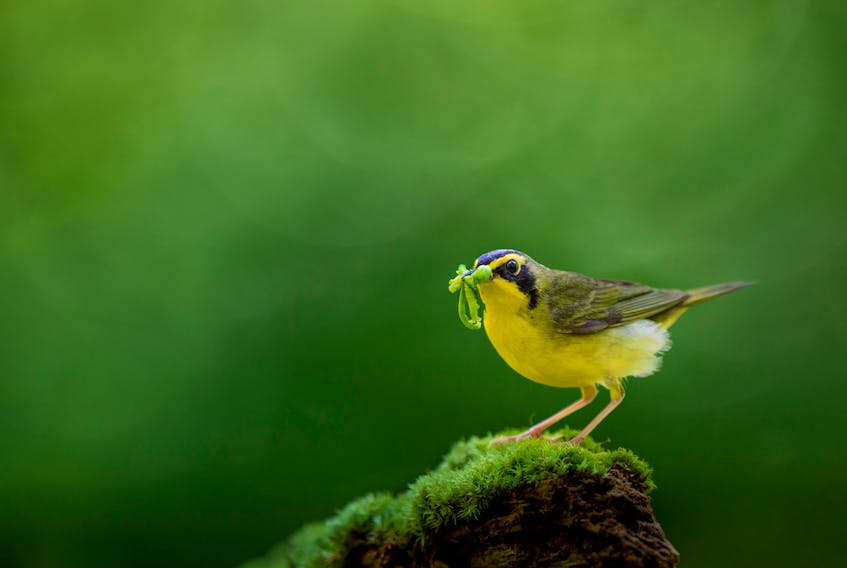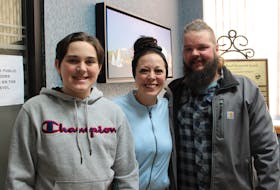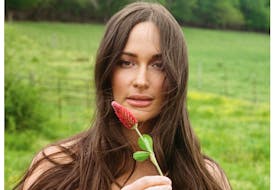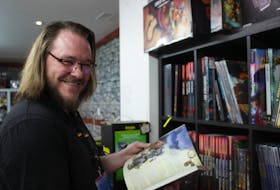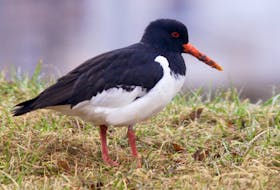What value is a caterpillar? For humans, it is hard to appreciate the importance of this question.
For a chickadee, the value is equivalent to more than 200 aphids. Caterpillars are the main course, especially this time of year when newly hatched birds are feeding to beat the band.

When we own real estate, we assume a responsibility for the caterpillar population. Caterpillars are like oxygen: we take them for granted until they are gone.
Your property is a link to other green spaces as near as the other side of your fence. And your neighbours’ yard and their neighbours’ yard and so on down the street and on to the next community.
Together, our private green spaces can make up the largest national park in the country. That is, if we just changed a few things about our priorities and behaviour.
A couple statistics: 950 million acres. That is how much virgin forest was cleared to settle the eastern half of North America.
Here’s a slightly different statistic: the abundance of invertebrates, which is made up mostly of insects, has fallen 45 per cent globally since 1974.
Wildlife habitat has been in free fall in North America for more than a couple of centuries.
These connections are made by American entomologist Doug Tallamy in his most recent book Nature’s Best Hope: A New Approach to Conservation that Starts in Your Yard (Timber Press, February 2020).

For environmentalists, the conversation in recent years has shifted to the dual crises of climate change and biodiversity loss. This book explains in plain language why we need to create more biodiversity in our yards and provides plenty of actionable advice. Starting with insects, “the little things that run the world”, quoting biologist Edward Osborne Wilson.
In the chapter, The Importance of Connectivity, we see how the food web is built upon insects. Not only do they pollinate 87.5 per cent of all plants and 90 per cent of flowering plants, they are also the primary source of nutrients for many vertebrates. For example, 96 per cent of terrestrial bird species rear their young on insects rather than seeds or berries – insects that are rich in proteins and fats.
This is particularly important when bird parents are feeding their fledgling young. A pair of adult Downy Woodpeckers forage over 5,000 caterpillars a day when the kids have hatched but have not left the nest.
Insects sustain plants through pollination, and the many animals that feed on them.

How can you create habitat for wildlife? By cultivating plants that support insect populations. These plants are overwhelmingly native species. A native oak, for example, can provide host to 454 different caterpillar species. Many exotic, imported tree species, like Gingko trees, support none – no caterpillars, no chickadees.
This is true of shrubs and berries as well. Berries from exotic species such as glossy buckthorn bush, Japanese honeysuckle and multiflora rose are high in sugar and contain less than one per cent of fat at a time of year when birds are seeking fats for migration and over wintering. By contrast, native plants such as Virginia creeper, wax myrtle, arrowwood viburnum, spicebush and gray dogwood produce berries with roughly 50 per cent fat.
Where do we put these plants? For starters, national parks are not enough. In the U.S., 86 per cent of land is privately owned, and globally 44.6 per cent of land is devoted to agriculture. Your backyard is important, which leads to Tallamy’s vision of a “Homegrown National Park”.
In the United States, lawns occupy 40 million acres. A lawn sequesters only a fraction of the carbon dioxide that a native plant eco-system will, and harbours virtually no insects.
Tallamy asks, “What if each landowner made it a goal to convert half of his or her lawn to productive native plant communities? In the U.S., even moderate success could collectively restore some semblance of ecosystem function to more than 20 million acres of what is now ecological wasteland. How big is 20 million acres? It is bigger than the combined areas of the 13 largest national parks.”
The book is written by an American, but his inspired ideas are applicable to Canada. Naturally, we love the idea.
Mark Cullen is an expert gardener, author, broadcaster, tree advocate and member of the Order of Canada. His son Ben is a fourth-generation urban gardener and graduate of University of Guelph and Dalhousie University in Halifax. Follow them at markcullen.com, @markcullengardening, and on Facebook.

